Sticking with outdated display technology feels safe, but it limits your clinical capabilities. As medical procedures become more complex, a standard monitor can obscure critical details, introducing unnecessary risks.
Yes, the move toward high-end medical displays is largely inevitable. It is driven by the increasing complexity of modern surgery and diagnostics, stricter regulatory standards, and the adoption of technologies like 4K imaging, AI, and robotics that demand superior visual performance.
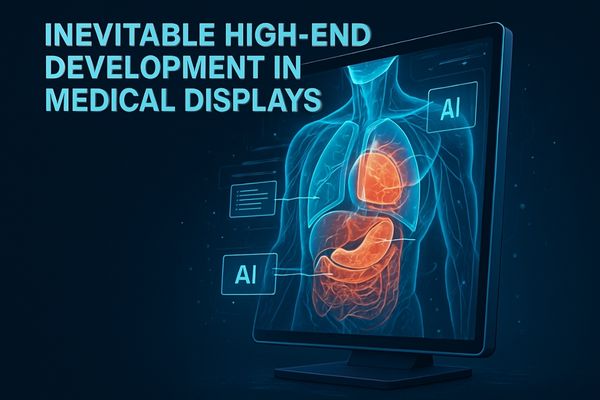
The medical display market1 is at a crossroads. For years, gradual improvements were sufficient. Today, the pace of change in medicine is forcing a technological leap. Surgeons are performing procedures that were once considered impossible, and diagnosticians are using new imaging modalities2 that generate vast amounts of data. These advancements all depend on one critical component: the screen. This guide explores the powerful forces pushing medical displays toward a high-end future and examines whether this trend is beneficial, necessary, and sustainable for healthcare providers everywhere. We will look at what drives this shift and what it means for your next purchase decision.
What factors are driving the shift toward high-end development in medical display technology?
Yesterday’s monitors cannot keep up with today’s medical imaging. You feel pressured to upgrade but need to understand the real forces behind this trend before you invest.
The primary factors driving this shift are the growing complexity of medical procedures, the need for greater diagnostic precision, and the integration of data-rich technologies like 4K/8K cameras, AI-powered analytics, and multi-modal imaging into the daily clinical workflow.
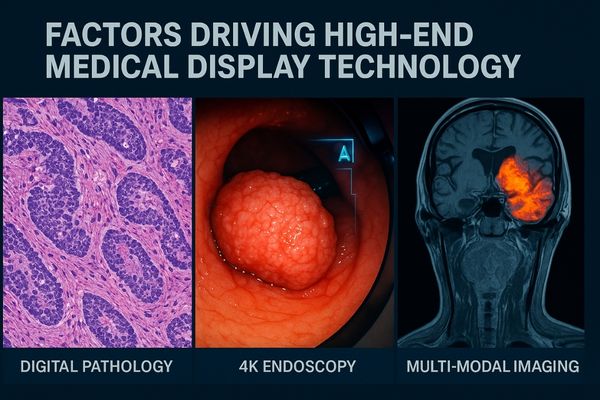
The move toward high-end medical displays3 is not driven by manufacturers alone; it is a direct response to clinical needs. First, diagnostic fields like digital pathology and genomics rely on incredibly detailed images. A pathologist needs to see subtle color variations in cell stains, which requires a display with exceptional color accuracy and resolution. Second, surgical procedures are becoming more intricate. Surgeons using endoscopic cameras need to see a clear, lag-free image with vibrant colors to differentiate tissues. Third, the rise of multi-modal imaging, where data from a CT scan and an MRI are fused together, requires displays that can handle different types of visual information simultaneously without compromise. Consumer-grade monitors simply lack the brightness, consistency, and specialized calibration needed to meet these demands. Specialized displays like our MD45C, which integrates two screens into a single panel, are specifically designed to support these complex, data-heavy workflows and improve diagnostic efficiency4.
How do clinical demands for precision and real-time imaging influence display advancements?
In the operating room, a surgeon experiences a slight video delay. This moment of uncertainty creates hesitation and risk, proving that display performance is directly linked to patient outcomes.
Clinical demands for precision push manufacturers to develop displays with higher resolutions, wider color gamuts, and high dynamic range (HDR). The need for real-time imaging drives innovation in processing electronics to achieve near-zero latency, ensuring instant visual feedback.
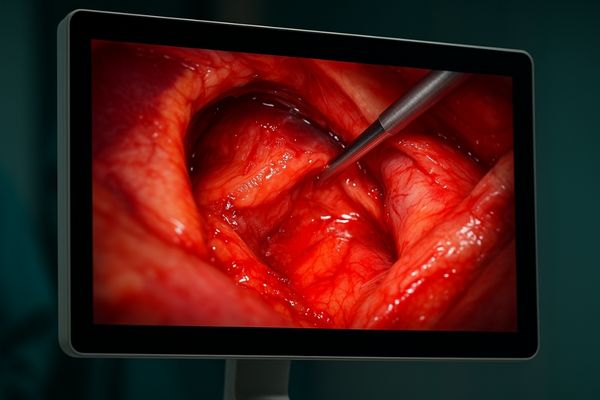
Clinicians cannot afford to work with ambiguous images. In diagnostics, precision means a monitor must faithfully reproduce every grayscale value according to the DICOM standard5, ensuring a subtle nodule is not missed. In surgery, precision means the image must have enough detail and color fidelity for the surgeon to identify delicate nerves and blood vessels. This demand directly fuels the race for 4K and even 8K resolution. At the same time, the image must appear in real time. Any perceptible delay, or latency, between the camera and the screen can disrupt a surgeon’s hand-eye coordination. To meet this need, we are focused on developing advanced processors that minimize signal delay. We also integrate technologies like HDR6, which allows a display to show extreme detail in both the brightest and darkest areas of an image simultaneously. This is critical in surgery for seeing deep into an incision without over-exposing the surrounding tissue. Our MS321PB is an example of a display engineered to meet these dual demands for incredible detail and instant response.
Old Technology vs. New Clinical Demands
| Feature | Legacy Display (HD) | High-End Display (4K HDR) | Clinical Impact of Advancement |
|---|---|---|---|
| Resolution | 1920 x 1080 pixels | 3840 x 2160 pixels | Dramatically improves detail for identifying fine anatomical structures. |
| Latency | Noticeable delay | Near-zero delay (<1 frame) | Ensures perfect hand-eye coordination in real-time procedures. |
| Dynamic Range | Standard (SDR) | High (HDR) | Allows visualization of detail in both shadowed and brightly lit areas. |
| Color Gamut | Limited to sRGB | Wide gamut (DCI-P3) | Provides more lifelike colors for better tissue differentiation. |
Are regulatory standards and imaging protocols accelerating the move to premium displays?
You worry that your current monitors may not pass the next audit. The growing list of regulations makes you wonder if only premium, certified displays can ensure compliance.
Yes, regulatory standards and imaging protocols are major accelerators. To meet standards like DICOM Part 14 and IEC safety regulations, displays require stable, high-quality components and advanced features like built-in calibration sensors, which are hallmarks of premium models.
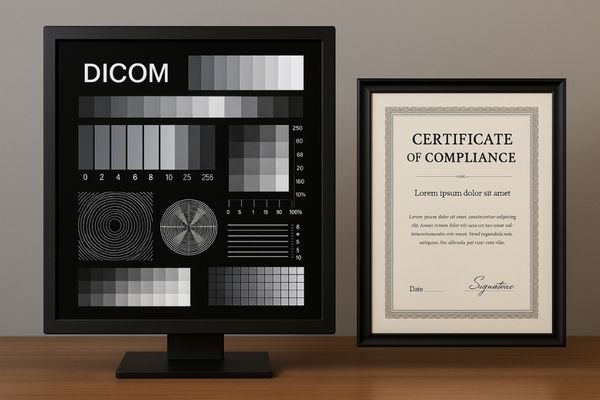
Regulatory bodies and standard-setting organizations exist to ensure patient safety and diagnostic consistency. While they may not explicitly mandate "high-end" displays, their requirements effectively push the market in that direction. For example, the DICOM Part 147 standard dictates a very specific relationship between the digital image value and the displayed brightness for grayscale images. Maintaining this standard over the life of a monitor is not easy. It requires a high-quality panel, a stable backlight system, and, ideally, an integrated sensor that can automatically perform calibrations to correct for age-related drift. These are not features found in basic monitors. Similarly, electrical safety standards like IEC 60601-18 place strict requirements on medical devices used in the patient vicinity. Meeting these rigorous standards involves more advanced engineering and higher-quality materials, pushing compliant displays into a more premium category. Our grayscale diagnostic model, the MD33G, is designed with these standards at its core, ensuring long-term compliance.
Does the rise of minimally invasive and robotic surgery make high-end displays a necessity?
A surgeon performs a keyhole procedure. Their entire world is the monitor. A standard display would make this delicate, life-saving work nearly impossible due to a lack of detail.
Absolutely. In minimally invasive and robotic surgery, the monitor is the surgeon’s only view into the patient’s body. High-end displays are no longer optional; they are a fundamental necessity for providing the depth perception, detail, and color accuracy required to operate safely and effectively.
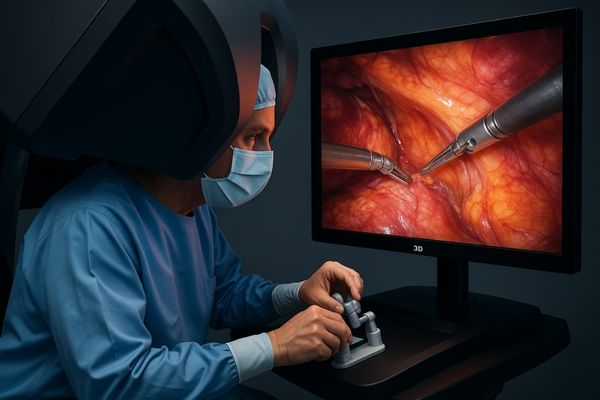
In traditional open surgery, surgeons could rely on their own eyes. With minimally invasive surgery9 (MIS) and robotic-assisted surgery, they operate by looking at a screen. This completely changes the requirements for the display. The monitor becomes a critical part of the surgical system. A surgeon needs to see the surgical field in immaculate detail to guide their instruments, which may only be millimeters away from a major artery. They need exceptional depth perception to gauge distances accurately. They also need perfect color fidelity to assess tissue health. A standard monitor fails on all these counts. It lacks the resolution for fine detail, the low latency for real-time feedback, and the color gamut for tissue differentiation. The transition to MIS and robotics has, by itself, made high-end surgical displays10 a mandatory piece of equipment in any modern operating room. Our MS275P is built specifically for these demanding applications.
Vision in Open Surgery vs. Minimally Invasive Surgery
| Aspect | Open Surgery | Minimally Invasive Surgery (MIS) | Display Requirement for MIS |
|---|---|---|---|
| Field of View | Direct, natural vision | Mediated by camera and monitor | High resolution, low latency |
| Depth Perception | Natural stereoscopic vision | Lost without 3D or proper shading | High contrast and bit depth to simulate depth |
| Color Fidelity | Natural eye perception | Dependent on camera and display | Wide color gamut, accurate calibration |
| Workspace | Large, open area | Small, enclosed space | High brightness and HDR to see in shadows |
What challenges do manufacturers face in balancing innovation, cost, and accessibility in high-end displays?
You see advertisements for exciting new display technologies. But when you look at the price, you realize they are out of reach for your institution’s budget, creating a frustrating gap.
The primary challenge is managing the high cost of cutting-edge components, such as 8K panels, advanced processing chips, and custom optics, while facing intense pressure from healthcare providers to keep prices low. Balancing innovation with global accessibility requires strategic design and manufacturing.
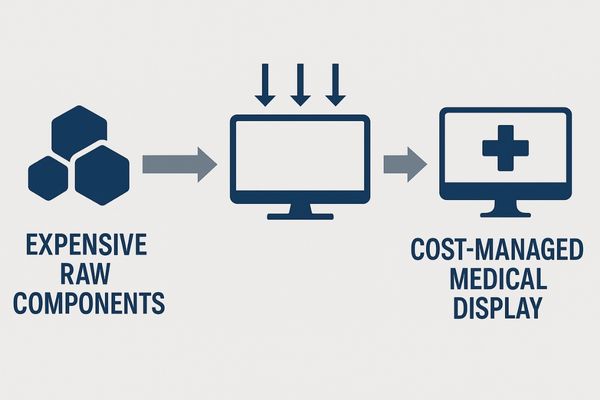
Pushing the boundaries of display technology is expensive. Research and development for new features like AI-powered image enhancement11 or next-generation panel technologies require significant investment. The components themselves, like true 10-bit panels12 with wide color gamuts or FPGAs for ultra-low latency processing, carry a high cost from suppliers. As a manufacturer, we face the constant challenge of incorporating these innovations to meet clinical demands while keeping the final product affordable. Many healthcare systems, especially in emerging markets, operate under strict budget constraints. They may recognize the benefits of a high-end display but simply cannot justify the capital expenditure. This creates a difficult balancing act. The solution involves smart engineering—finding ways to deliver essential performance features more efficiently—and building a product portfolio that offers different tiers of performance at different price points. Our model MD22CA represents our effort to provide certified diagnostic quality in a cost-effective package.
Can companies like Reshin lead the high-end market while addressing affordability in emerging regions?
You need a company that understands both the cutting-edge needs of a top research hospital and the practical realities of a regional clinic. It seems like you have to choose one or the other.
Yes, we can lead the high-end market while addressing affordability by adopting a dual strategy. We invest heavily in developing flagship products that set new industry benchmarks, and then we strategically cascade those proven technologies into more cost-effective models for broader markets.
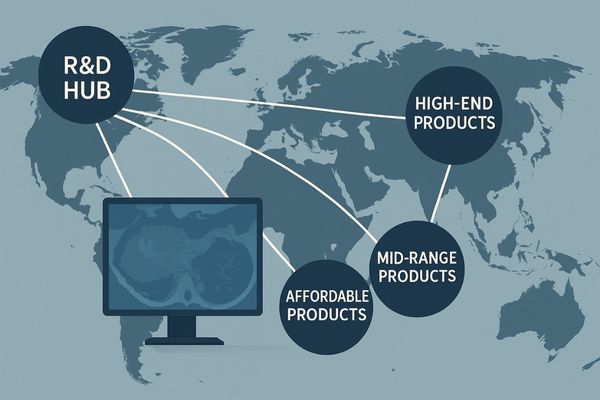
Our goal is not just to innovate for the sake of innovation, but to make high-quality medical imaging13 accessible to more professionals. We believe the best way to achieve this is through a tiered product strategy14. At the top end, we design and build flagship monitors that incorporate the very latest technologies. These products are for advanced surgical centers and research institutions that demand the absolute best. The knowledge and experience gained from developing these elite models are invaluable. We then use this expertise to design mid-range and value-oriented displays. These products may not have every single premium feature, but they are built with the same commitment to quality, reliability, and clinical performance. This approach allows us to leverage economies of scale in manufacturing and pass the savings on to our customers. A versatile and reliable monitor like our MD26C is a direct result of this philosophy, offering excellent performance that meets the needs of a wide range of clinical settings without the flagship price tag.
Conclusion
The evolution toward high-end medical displays is an undeniable and necessary trend. It is driven by the real needs of modern medicine, ensuring better diagnostics and safer surgical outcomes.
📧 Ready to transition to high-end medical displays for your facility? Contact Martin at martin@reshinmonitors.com to explore Reshin’s advanced solutions.
-
Explore this link to understand the evolving landscape of medical displays and how it impacts healthcare technology. ↩
-
Discover the advancements in imaging modalities that are revolutionizing diagnostics and treatment in modern medicine. ↩
-
Explore how high-end medical displays enhance diagnostic accuracy and improve patient outcomes in clinical environments. ↩
-
Learn about innovative strategies and technologies that boost diagnostic efficiency, crucial for timely patient care. ↩
-
Understanding the DICOM standard is crucial for ensuring image precision in diagnostics and surgery. ↩
-
Exploring HDR technology reveals how it enhances detail in medical images, vital for accurate surgical procedures. ↩
-
Understanding DICOM Part 14 is crucial for ensuring compliance in medical imaging, enhancing patient safety and diagnostic accuracy. ↩
-
Exploring IEC 60601-1 helps grasp the essential safety standards for medical devices, ensuring they meet rigorous safety and performance criteria. ↩
-
Explore this link to understand how minimally invasive surgery enhances patient recovery and reduces complications. ↩
-
Discover the essential features of high-end surgical displays that ensure precision and safety in modern surgical procedures. ↩
-
Explore how AI-powered image enhancement can revolutionize display technology and improve image quality in various applications. ↩
-
Learn about the superior color accuracy and depth that true 10-bit panels provide, enhancing visual experiences significantly. ↩
-
Exploring this resource will provide insights into how high-quality medical imaging enhances patient care and diagnostic accuracy. ↩
-
Understanding this strategy can help you see how companies optimize their offerings to meet diverse customer needs effectively ↩


